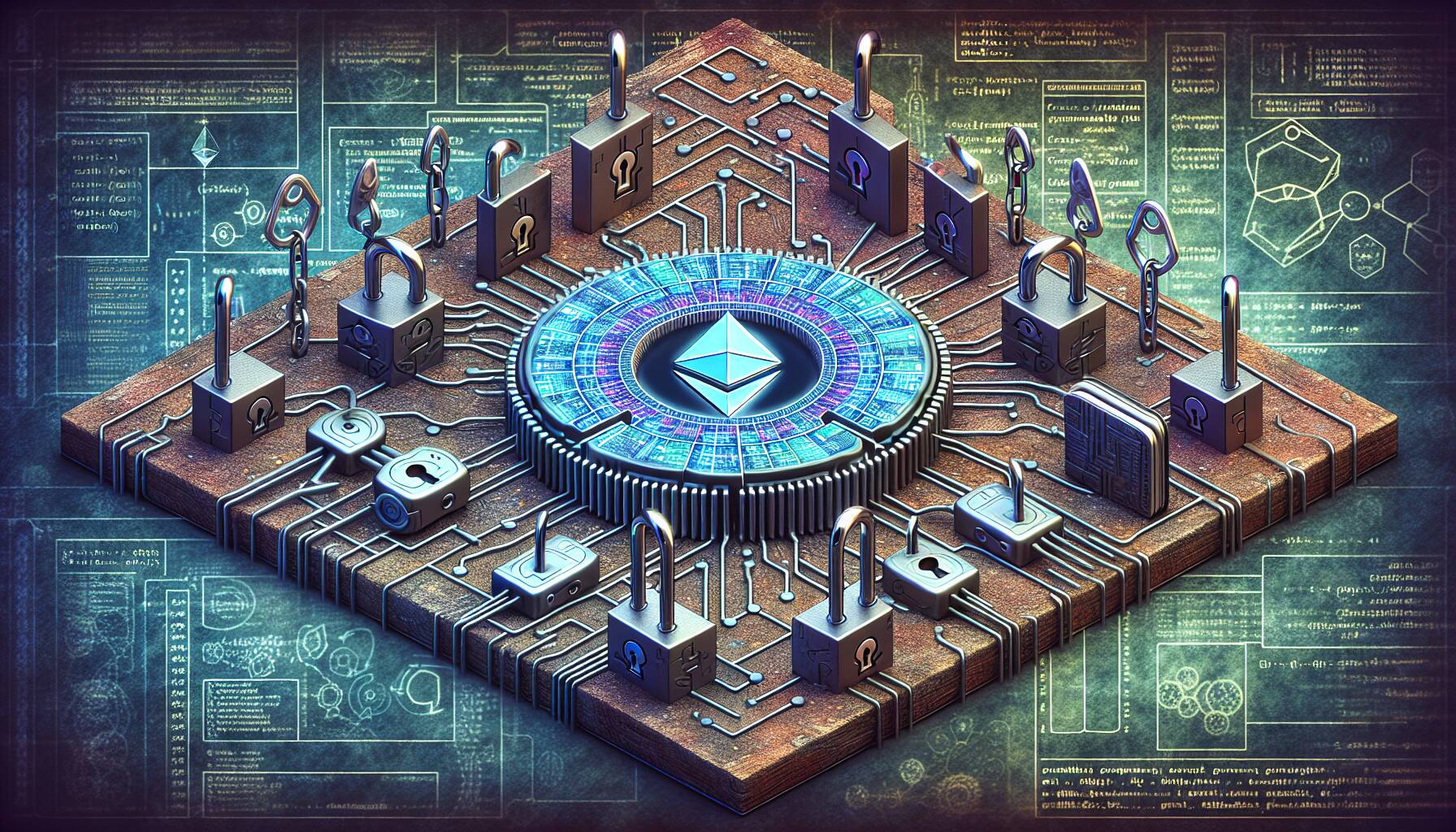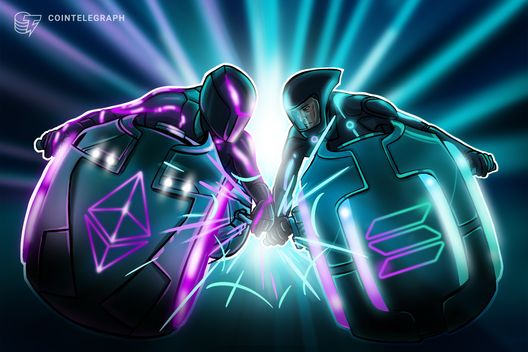In recent developments that have captured the attention of the cryptocurrency community, Konstantin Lomashuk, the founder of the Lido staking protocol, has hinted at his plans to establish a “Second Foundation” aimed at enhancing the Ethereum ecosystem. This announcement comes on the heels of Ethereum co-founder Vitalik Buterin’s proposal for a significant restructuring of the current Ethereum Foundation (EF), which is the nonprofit organization dedicated to supporting Ethereum’s ongoing development.
Buterin’s restructuring plans, shared through a series of posts on X (formerly known as Twitter), are intended to streamline decision-making processes within the EF and rectify perceived inefficiencies. However, these plans have not been without controversy. Critics argue that Buterin’s prominent role in this overhaul challenges the foundational principle of decentralization that Ethereum upholds. The EF itself has long faced scrutiny regarding its centralizing influence, particularly as competing blockchain networks like Solana continue to gain traction.
“The idea of a ‘Second Foundation’ is more about creating competition between different groups, giving the community a choice,” Lomashuk stated in a previous post.
Amid these discussions, Lomashuk’s vision for a parallel foundation aims to foster diversity in the Ethereum governance landscape. This concept suggests that without a healthy level of competition, the Ethereum community could stray from its intended path. Furthermore, Lomashuk’s prominence in the ecosystem is underscored by Lido’s significant role: the protocol currently manages approximately 28% of Ethereum’s staked ETH, positioning itself as the largest validator on the network.
The Ethereum Foundation has also faced criticism over its “rollup-centric” roadmap, which prioritizes layer-2 solutions designed to improve transaction speed and cost-efficiency. While these innovations have bolstered Ethereum’s capacity, they have sparked concerns regarding potential security compromises and impacts on base fee revenue.
As the landscape evolves, the prospect of a “Second Foundation” raises intriguing questions about the future dynamics between Lomashuk’s initiative and the established Ethereum Foundation. Given the increasing demands for a clearer vision for Ethereum’s future, all eyes will be on how these developments unfold in the coming months.

Key Insights on the Future of Ethereum and the Proposed “Second Foundation”
The recent developments surrounding the Ethereum ecosystem have significant implications for its users and the broader blockchain community. Here are the essential points to consider:
- Konstantin Lomashuk’s “Second Foundation”
- Lomashuk has proposed creating a “Second Foundation” to foster competition and offer alternative pathways for Ethereum’s growth.
- This initiative aims to address concerns regarding the centralized decision-making processes of the Ethereum Foundation.
- Vitalik Buterin’s Restructuring Plans
- The co-founder of Ethereum has outlined a major reorganization of the Ethereum Foundation, focusing on improving efficiency and decision-making.
- This restructuring has met with criticism as it may appear to contradict Ethereum’s ethos of decentralization.
- Criticism of the Ethereum Foundation
- The Foundation has been scrutinized for its centralizing effects within the Ethereum ecosystem.
- There is increased pressure on the EF to provide a clearer vision for Ethereum’s future amidst growing competition from networks like Solana.
- Concerns Over Layer-2 Networks
- The Ethereum Foundation’s “rollup-centric” roadmap has been criticized for prioritizing efficiency at potential security costs and reducing base fee revenues.
- This could affect users’ trust in Ethereum’s long-term viability, influencing their investment and participation decisions.
- Lido’s Influence in the Ecosystem
- Lido, founded by Lomashuk, is the largest validator on Ethereum, controlling about 28% of staked ETH, which gives it significant power within Ethereum’s governance.
- This highlights the importance of understanding how the dynamics of staking and governance may be impacted by the proposed changes.
“Without competition, we risk losing the right path.” – Konstantin Lomashuk
Comparative Analysis of Ethereum’s Governance Shake-Up
The recent announcements from Konstantin Lomashuk, founder of the Lido staking protocol, and Vitalik Buterin, co-founder of Ethereum, signify pivotal changes in the governance of Ethereum’s ecosystem, each boasting distinct advantages and hurdles that could reshape the landscape.
Competitive Advantage of the Second Foundation: Lomashuk’s “Second Foundation” aims to inject a spirit of competition within the Ethereum ecosystem. By proposing alternative pathways for development, it could democratize contributions, allowing diverse voices and ideas to flourish. This initiative could attract community members who feel sidelined by the Ethereum Foundation, thereby fostering innovation and agility in addressing Ethereum’s scalability challenges. The emphasis on accessibility could enhance grassroots development, empowering a broader array of participants to engage actively in Ethereum’s future.
Disadvantages Facing the Second Foundation: However, the endeavor may face significant challenges, including the potential for fragmented efforts that dilute focus and resources. If not properly aligned, competing foundations could lead to inconsistent messaging or disunity within the Ethereum community. Additionally, skeptics may view this initiative as yet another layer of complexity, potentially complicating governance rather than streamlining it.
Ethereum Foundation’s Strategic Moves: On the other side, Buterin’s restructuring proposal aims to refine the decision-making processes within the existing Ethereum Foundation, a move that could enhance efficiency and address criticisms of centralization. The transition to a more streamlined organization may attract institutional support, assuring stakeholders of a more organized approach to Ethereum’s roadmap. These changes might also instill confidence among investors looking for solidity and clear direction in the wake of competition from other blockchain networks like Solana.
Challenges for the Ethereum Foundation: Despite its strategic advantages, the Ethereum Foundation faces scrutiny over centralization, particularly as it attempts to implement a “rollup-centric” roadmap. Critics argue that prioritizing layer-2 solutions could compromise security and impact Ethereum’s base fee structure. The mixed sentiments surrounding its evolving governance can alienate passionate community members, potentially creating a rift that undermines collaborative innovation.
Who Benefits and Who Might Struggle: Lomashuk’s “Second Foundation” could resonate well with independent developers and community members craving more influence and a platform for their ideas, addressing the perceived monopolization of insider perspectives by the Ethereum Foundation. Conversely, established players within the Ethereum ecosystem, particularly those aligned with the Ethereum Foundation, may feel threatened by this competitive landscape, leading to discontent or defensive positions. As these dynamics unfold, it is essential to monitor how each camp navigates this transitional period—both for their growth and the overall health of Ethereum’s ecosystem.

















